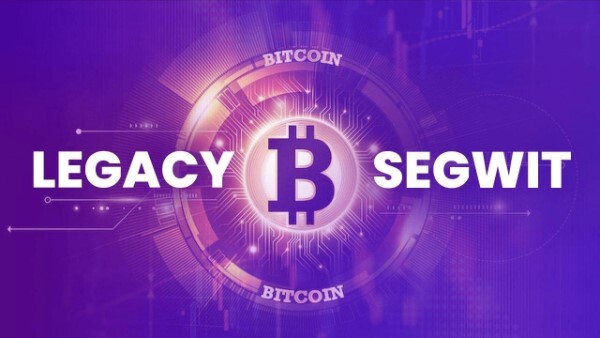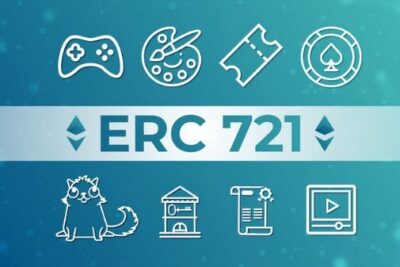

What Is SegWit? And What Does It Solve For Bitcoin
25 March 2022
In 2017, Bitcoin Core received an update known as Segregated Witness, which is also known as SegWit. Several parts of Bitcoin were enhanced as a result of SegWit, and the platform was opened up to future updates such as Taproot.
For starters, and maybe most importantly, SegWit eliminated transaction malleability. It also increased the maximum size of a Bitcoin block, enabling more transactions to be included in a single block. Finally, SegWit provided two new script types, which are methods of transmitting and receiving Bitcoin, as well as a new encoding scheme known as Bech32, as part of the bitcoin upgrade.
The SegWit upgrade was controversial, and the activation of the upgrade resulted in significant divisions within the Bitcoin community. Bitcoin, on the other hand, emerged stronger and more scalable, demonstrating that its decentralization was robust enough to resist an attempted takeover by miners and other community leaders.
In this bePAY‘s post, you’ll discover what SegWit is and why it’s important for the long-term viability of the Bitcoin blockchain.
What Is SegWit?
What is SegWit? Developed in 2015, Segregated Witness (SegWit) is a protocol update. Scalability is a major concern for blockchain networks, and this notion was developed as a response to it.
An average of one new block comprising numerous transactions is validated by the Bitcoin network every ten minutes on average. Consequently, the block size influences the amount of transactions that can be verified in each block. There are around seven transactions a second that the Bitcoin network can handle right now.
Rearranging block data to remove signatures from transaction data is SegWit’s primary goal. Segregating witnesses (signatures) from transaction data is the goal of SegWit. As a result, the network’s transaction throughput is boosted thanks to the ability to hold more transactions per block.
A Bitcoin transaction may take a long time to complete since the network can only handle roughly 7 transactions per second. Traditional payment methods and banking networks can handle thousands of transactions per second, while this is a lot slower.

What is SegWit?
Bitcoin developer Pieter Wuille and other Bitcoin Core contributors created SegWit in 2015. The Bitcoin network was soft forked in August 2017 to enable the SegWit update. Many cryptocurrencies, including Bitcoin and Litecoin, now use SegWit. Among the numerous advantages brought about by the protocol, change are increased transaction and block capacity.
What Does SegWit Solve?
Fixing Transaction Malleability
Two methods exist for modifying a transaction. An extra piece of data may then be added to the signature as well as other data necessary to unlock the Bitcoins in a ScriptSig once it has been signed. Furthermore, the signature itself, which is stored inside the ScriptSig, may be altered. In order for a signature to be immutable, it must not have the ability to sign itself. Changes to the ScriptSig and the signatures it includes will have an effect on the txid preimage since they are part of it.
To avoid this, SegWit wipes out the ScriptSig’s contents. For example, the signatures and public keys of SegWit transactions are moved to a whole new component of SegWit transactions known as Witness, which is not hashed to generate the transaction’s hash. SegWit inputs are signed with a ScriptSig, which is immutable after signing, and the data needed to unlock Bitcoin is stored in the Witness. For example, it is impossible to modify the ScriptSig without invalidating the whole transaction.
Enabling The Lightning Network
In the wake of SegWit’s activation, the Lightning Network was launched as a second layer on top of the Bitcoin system. For as long as transaction malleability remained a possibility in Bitcoin transactions, the Lightning Network was doomed to failure until SegWit was triggered.
Its Block Size Increased With SegWit
As a soft fork, SegWit changed one of the most significant consensus rules of Bitcoin in a backward-compliant fashion in order to increase the number of transactions that might be included in each block.
Before SegWit, a block could only contain 1MB of data, limiting the number of transactions per block to around 1650. Instead of being limited by its size, SegWit introduced blocks that were limited by their weight. Blocks of today typically have roughly 2700 transactions in them.

SegWit solutions
Note: Before SegWit, blocks were restricted to a maximum of 1MB in size.
A transaction’s total bytes are expressed as a block size. This was formerly limited to 1MB, or one million bytes, thanks to the SegWit technology.
Weight units are used to compute block weight. Non-Witness data is worth four weight units, whereas Witness data is worth one weight unit. There is a maximum block weight restriction of 4 million weight units per block. In other words, if a block exclusively includes non-SegWit transactions, the previous 1 million byte limit would be equal to 4 million weight units.
It is possible to maintain a soft split with this new measuring approach while simultaneously providing Bitcoin miners & users with incentives to switch to SegWit. Because the Witness data eats up less of the block weight limit, Bitcoin users who utilize SegWit transactions may save on transaction fees. Miners group that includes SegWit transactions in their blocks can also earn more fees because they can accommodate more transactions in each block.
>> Read also: What is AMM crypto? Its vital role in the cryptocurrency world
SegWit Benefits And Its Drawbacks
SegWit Benefits
- Transaction malleability has been extinguished: An important flaw inside the Bitcoin protocol has been addressed with a simple and innovative solution: SegWit.
- Faster: Transactions in Bitcoin are completed much more quickly now. SegWit reduces the weight of the Bitcoin blockchain. Because of this, the Bitcoin blockchain is able to handle more transactions without having to become larger.
- Cheaper: Bitcoin transactions are cheaper. ‘ Lower transaction costs are associated with a faster processing time. The Bitcoin community should embrace any adjustments that reduce transaction costs, which may be astronomical.
- Possible intriguing developments: If Bitcoin is to service a network of millions of users, it must be scalable. Like the lightning network, SegWit helps scale applications.

SegWit pros and cons
SegWit Drawbacks
There aren’t enough nodes making advantage of it. Many Bitcoin miners dislike SegWit. Having to sustain the witness-data sidechain, which generates no fee money, reduces their profitability and makes them unhappy. SegWit support has been sluggish to spread to other Bitcoin services, such as wallets. The use of SegWit Bitcoin was just 14% in February 2018, over six months after it was launched. There has been an increase in numbers since then but the network has a long way to go before it is upgraded entirely.
It’s a temporary fix for long-term issues. It has been argued by several Bitcoin developers that the SegWit protocol doesn’t go far enough in solving the scalability issue. Bitcoin’s blockchain size and how transactions are handled are critical to the platform’s future growth, they argue. In the Bitcoin community, SegWit has divided many. Several hard forks have resulted as a result of SegWit’s controversy. Bitcoin Cash is the best-known of the bunch.
Now that you know all there is to know about SegWit, you can answer the question for yourself. Here are some last thoughts I’d like to offer.
The Difference Between Bitcoin SegWit Vs Legacy Vs Native SegWit Wallet
At the moment there are 3 types of bitcoin wallets: Bitcoin SegWit wallet, Bitcoin Legacy wallet, and Bitcoin Native SegWit wallet. Below is a short description of them.
- Bitcoin Legacy wallet addresses: Begin with “1” which would be the address format that Bitcoin has used from its inception and is also the most commonly used address format. P2PKH stands for “Pay To Public Key Hash”.
- Bitcoin SegWit wallet addresses: Begin with “3” In comparison to traditional addresses, Bitcoin SegWit addresses begin with the number 3 and have more sophisticated functionality. It makes use of a P2SH “pay to script hash” script function, which is often used for multisig addresses, which may indicate that multiple digital signatures are required to verify a transaction.
- Bitcoin Native SegWit wallet addresses: Begin with “bc1” and use the SegWit local address format, which was built particularly for SegWit. Certain exchanges may not currently accept this format. At the moment, this format supports three distinct sorts of Bitcoin addresses. Bech32 is the least often used of the three formats.

SegWit vs Legacy
>> Read also: TVL crypto everything you need to know about
Depending on each evaluation element, you can choose amongst three of them to use, let’s take a quick comparison:
Support For Wallets
Each of the three addresses is compatible with the others, allowing users to send and receive Bitcoins from one to the other. However, whether or not a wallet provider supports all wallets is dependent on the wallet provider. It is often discovered that older wallets do not support the native SegWit address. As a result, it’s best to double-check with the wallet provider.
Efficiency
Because SegWit isolates the transaction signature from the transaction data, it is more efficient than the Legacy network. Users who utilize SegWit addresses will pay a lesser cost than those who use Legacy addresses. The transactions are also quicker because of the huge capacity of each block on the SegWit address, which allows for many more transactions to be stored in comparison. Furthermore, since SegWit removes signatures from transaction data, transaction signatures cannot be tampered with by a bad entity.
Transactions Fee
Native SegWit, on the other hand, is the most recent advancement in the industry. While transactions using a SegWit address are better than transactions with a Legacy address, native SegWit transactions are much better. When it comes to Bitcoin SegWit vs Native SegWit, the latter takes the lead since it has a larger block size and cheaper transaction costs than any other Bitcoin address type.
FAQs About SegWit
What Is SegWit2x?
During the block size discussion in 2017, SegWit2x was offered as a solution. In the first stage, SegWit will be implemented and the block size would be raised to 2mb, according to the proposed plan the majority of the Bitcoin network rejected this proposal.
Is SegWit Secure?
SegWit prevents transaction malleability, which is the ability to modify tiny amounts of information in a block. This strengthens the security of the Bitcoin network.

SegWit frequently asked questions
Is SegWit Better?
Although the cryptocurrency community is divided on whether is SegWit better or harmful? The benefits to the blockchain, miners, and nodes that embrace it outweigh the drawbacks. The deployment of SegWit led to the development of Taproot, an update to Bitcoin based on SegWit that enables even quicker validation.
Is SegWit To Be A “Soft Fork”?
In the Bitcoin network, SegWit is a “soft fork.” A hard fork, in contrast to a soft fork, results in the creation of a new blockchain.
Is SegWit Backwards Compatible?
Even if you haven’t activated SegWit in your transaction, SegWit is backward compatible and will function.
How Do You Use SegWit?
Here are a few steps guide on how do you use SegWit?
- Setting up a wallet that supports SegWit transactions or updating your existing wallet.
- Establish a new account.
- Produce a SegWit address.
- Transfer the cryptocurrency to your newly created SegWit account.
Final Thoughts
The deployment of SegWit was the most significant improvement to the Bitcoin protocol to date, and the fact that it was endorsed and executed by the decentralized community adds even more intrigue.
Many difficulties linked to Bitcoin and other blockchain networks were solved thanks to SegWit’s adoption, notably in terms of scalability. As a result of SegWit and the second-layer protocols, blockchain networks can process a greater volume of transactions while reducing costs.
The novel and powerful SegWit approach has yet to be widely implemented. About 53% of Bitcoin addresses are now utilizing SegWit. Explore other cryptocurrency topics, click here

Cryptocurrency Explained: What Is Meme Coin In Crypto?
22 March 2022











